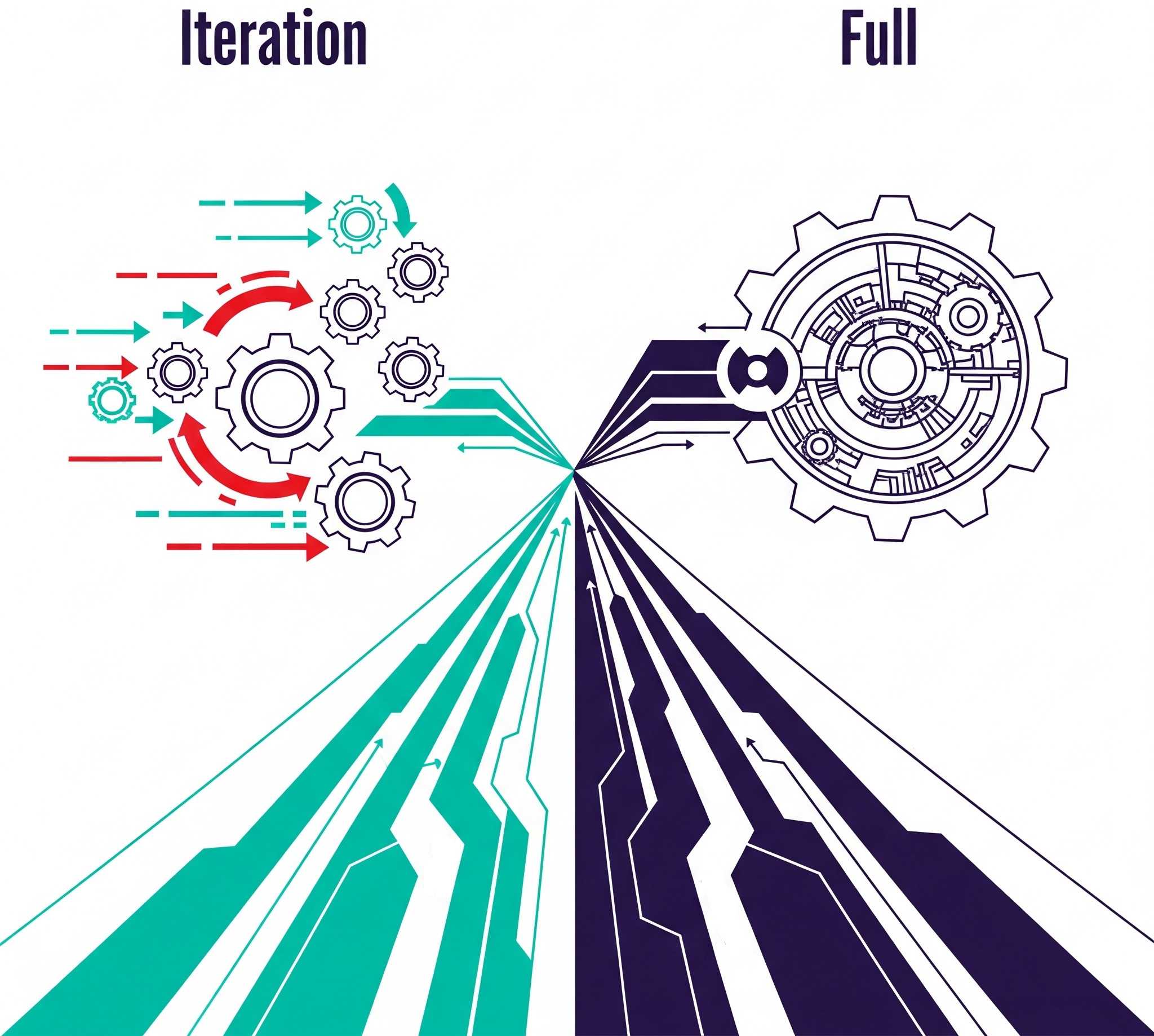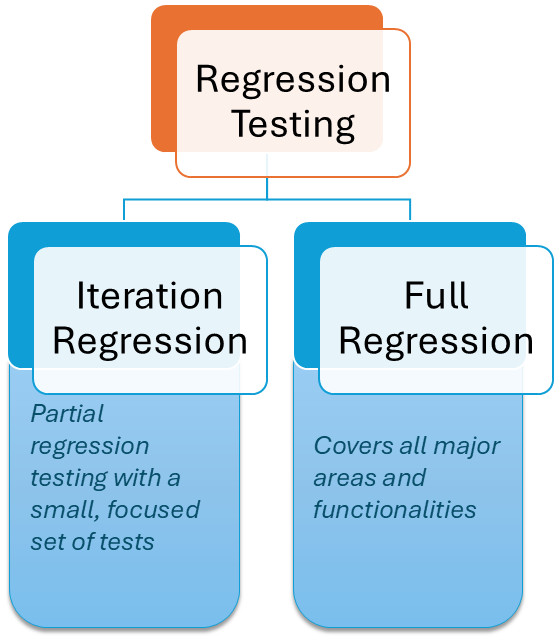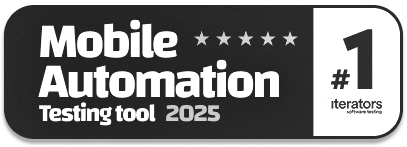Iteration Regression Testing vs. Full Regression Testing
|
|
Your software’s safety net, that’s what regression testing is. It’s the act of re-running tests to ensure that changes you made to your code didn’t introduce any new defects or make existing parts of your code fail to work as expected. In an Agile world, with its tiny frequent development cycles, and ongoing maintenance, strong regression testing is not just a good idea – it’s a must-have to keep software quality and to keep your users smiling.
But did you know that there are different types of regression testing as well? Teams often juggle between two primary strategies: Iteration Regression Testing and Full Regression Testing. While both aim to ensure stability, they differ significantly in their scope, frequency, and purpose.
| Key Takeaways: |
|---|
|
Let’s learn more about each of them and how they differ from each other.

Iteration Regression Testing
Let us go through the details of iteration regression testing.
What is Iteration Regression Testing?
Iteration regression testing, also known as “partial regression testing“, is all about running a small number of focused regression tests in a particular sprint, or iteration. Its primary purpose is not to test every last corner of your application. As such, the goal is very specific: verify that the new functionality, bug fixes, or code introduced for that sprint has not broken an existing functionality, which was working just fine for your users.
When to Use it in Agile?
Given its focused nature, iteration regression testing is perfectly tailored for the rhythm of Agile development. You’ll typically perform this type of testing right after every sprint or iteration concludes, or even continuously as new code is integrated.
Why then? Because time is always a critical factor in Agile. You need immediate feedback on the health of your application after recent changes, and you simply don’t have the luxury of running a massive test suite every few days. Iteration regression testing provides rapid validation, ensuring you catch issues while they’re still fresh and easier to fix.
Key Characteristics and Approaches of Iteration Regression Testing
So, what does iteration regression testing look like in practice?
- First, it relies on a smaller, more manageable regression suite compared to a full suite. The trick is intelligently selecting which tests to run.
- Teams often use risk-based prioritization, meaning they focus on test cases covering the most critical or high-risk functionalities that are likely to be impacted by the sprint’s changes. Read: Risk-based Testing: A Strategic Approach to QA.
- It’s also a highly collaborative effort – testers and developers often work together to decide which specific areas need re-validation. The key is to narrow down the focus to the newly added or modified code and the functionalities directly interacting with it.
Benefits of Iteration Regression Testing in Software Engineering
The advantages of this approach are clear. By running tests frequently and within the sprint, you achieve early bug detection. This means issues are caught when they’re still small, inexpensive, and quick to resolve, preventing them from growing into major headaches down the line. You also get much faster feedback loops, allowing the team to adapt and course-correct quickly. Ultimately, this approach significantly reduces the accumulation of technical debt within a sprint, as you’re constantly weeding out regressions before they pile up.
Challenges with Iteration Regression Testing
However, iteration regression testing isn’t without its limitations. Its focused nature means there’s a potential for missing impacts on non-directly related areas. Since you’re not testing everything, a change in one module could subtly affect another seemingly unrelated part of the application, and these issues might slip through the cracks. This can sometimes lead to a fragmented view of overall application stability if not complemented by other testing strategies. It’s a trade-off between speed and comprehensive coverage.
Full Regression Testing
Let us go through the details of full regression testing.
What is Full Regression Testing?
Now, let’s turn our attention to full regression testing. If iteration regression is like a quick health check of a specific body part, full regression testing is the complete, head-to-toe medical examination. It involves executing a comprehensive suite of regression tests that covers all major functionalities and areas of your product, leaving no stone unturned. The primary purpose here is to provide an overarching assurance of the entire application’s stability, functionality, and performance, ensuring that even the oldest or most seemingly untouched parts of the system are still working flawlessly after a significant period of development or major changes.
When to Use Full Regression Testing?
Unlike iteration regression, full regression testing isn’t something you’d typically do every few days. It’s usually reserved for more significant milestones. You’ll want to conduct a full regression test before major releases of your software, ensuring that the version going out to users is as robust and bug-free as possible. It’s also critical after significant code changes – the kind that could potentially impact broad areas of the software, not just a single sprint’s features. Sometimes, customers or compliance requirements might even demand a comprehensive stability check, making full regression an absolute necessity to provide that ultimate layer of assurance.
Maintenance for Full Regression Testing
A defining characteristic of full regression testing is its sheer size. The test suite is often large and consequently time-consuming to execute. Because it covers the entire application, this suite is a living, breathing entity that requires constant attention. Test cases within a full regression suite need to be continuously revised, updated, and even removed to maintain their relevance, value, and quality. As your application evolves, so too must your full regression suite, ensuring it accurately reflects the current state of the product and effectively identifies any new regressions.
Benefits of Full Regression Testing in Software Engineering
The payoff for this extensive effort is significant. Full regression testing provides high confidence in the overall application stability. When this suite passes, you have a strong indication that the entire system is performing as expected. It offers a thorough validation of all functionalities, catching even those subtle, indirect impacts that a more focused test might miss. Furthermore, it’s often the gold standard for meeting compliance standards or satisfying customer requirements that demand a rigorous, end-to-end quality check before deployment.
Challenges with Full Regression Testing
Despite its benefits, full regression testing comes with its own set of challenges. It is inherently time and resource-intensive. Running a massive suite of tests can take hours, even days, consuming significant computational power and human oversight. If not managed efficiently, it can easily become a bottleneck in your release pipeline, slowing down your time-to-market. Lastly, the maintenance of such a large test suite can be a daunting task, requiring dedicated effort to keep tests relevant and reliable as the application continuously evolves.

Iteration Regression Testing vs. Full Regression Testing
Now that we’ve explored Iteration Regression Testing and Full Regression Testing individually, let’s put them side-by-side to clearly understand their differences and, more importantly, how they complement each other in an effective Agile strategy.
| Feature | Iteration Regression Testing | Full Regression Testing |
|---|---|---|
| Scope | Highly targeted; focuses on new changes within a sprint and directly impacted areas. | Comprehensive; covers all major functionalities and areas of the entire application. |
| Frequency | Frequent; typically performed after every sprint or iteration. | Less frequent; usually conducted before major releases or significant, broad-impacting updates. |
| Objective | To ensure the stability of changes introduced in the current sprint; catch immediate regressions. | To guarantee the overall stability, functionality, and integrity of the entire product. |
| Resource Demands | Lower; uses a smaller, focused test suite, requiring less time and computing power. | Higher; involves a large, extensive test suite, demanding significant time and resources. |
How testRigor Elevates Both Iteration and Full Regression Testing
Now that we’ve laid out the distinctions between iteration and full regression testing, let’s talk about how to make both of these processes not just manageable, but truly efficient and impactful. This is where a tool like testRigor steps in to transform how teams approach regression testing in the Agile world.
Codeless Automation for Speed and Efficiency
One of the biggest hurdles in any kind of regression testing, especially with a massive full regression suite, is the time and effort it takes to create and maintain tests. Traditional automation often involves writing complex code, which can be slow and requires specialized skills. testRigor changes this entirely with its no-code automation.
You write tests in plain English, just as you’d describe a user action. This drastically cuts down on the time it takes to build your test suites, whether you’re quickly spinning up new tests for a sprint’s features (perfect for iteration regression) or building out a comprehensive, application-wide set of tests (ideal for full regression).
Less time spent on writing and debugging scripts means more time for actual quality assurance.
Self-Healing Capabilities for Reduced Maintenance
Software changes constantly. A button moves, a field name changes, and suddenly, your carefully crafted automated tests break. This “flakiness” is a huge drain on resources, especially for a large full regression suite that needs to run reliably over long periods.
testRigor addresses this with its AI-powered self-healing tests. If a UI element changes slightly, testRigor’s intelligence often figures it out and adapts, meaning your tests keep running without manual intervention. This dramatically reduces the maintenance effort, which is absolutely crucial for the extensive and long-running test suites often used in full regression, but also incredibly helpful for keeping your sprint-specific tests robust even with minor tweaks.
Human-Readable Tests for Enhanced Collaboration
Often, the testing process feels isolated from the rest of the development team and business stakeholders. Test scripts can look like gibberish to anyone without a coding background. testRigor bridges this gap by allowing you to write tests in human-readable, plain English. This means anyone – QA, developers, product managers, even business analysts – can understand exactly what a test is doing. This brings in much better collaboration; the whole team can contribute to test case selection, easily review test coverage, and have a shared understanding of what “done” means for a feature. It makes creating a focused iteration regression suite a team effort and ensures everyone understands the scope of your complete regression.
Scalability and Parallel Execution
When running a full regression test, you often need to cover multiple browsers, operating systems, and devices. This can be agonizingly slow if tests run one after another. testRigor enables scalable and parallel execution, meaning you can run your tests across numerous environments simultaneously. For full regression, this is a game-changer, allowing you to complete extensive test suites in a fraction of the time. For iteration regression, it means you can quickly validate your sprint features across all necessary environments without delay. Read: Test Scalability.
Seamless Integration into CI/CD Pipelines
In today’s Agile world, automated testing needs to be an integral part of the development workflow. testRigor easily integrates with popular CI/CD (Continuous Integration/Continuous Delivery) pipelines. This means your regression tests can automatically kick off every time new code is checked in, ensuring continuous feedback. Whether it’s a quick iteration regression run after every commit or a full regression suite triggered before a major deployment, testRigor helps embed quality checks directly into your development process, ensuring you’re always shipping robust software.
One Tool for All Your Testing Needs
With testRigor, you can test across multiple platforms (web, mobile, desktop) and browsers. Be it filling forms, logging in using 2FA, email verification, or something more tricky like testing graphs, images, chatbots, LLMs, Flutter apps, mainframes, this tool can do it all.
Conclusion
Perhaps the most crucial takeaway from this comparison is that these two approaches are complementary, not mutually exclusive. It’s not a matter of choosing one over the other. A truly robust Agile testing strategy understands that both iteration and full regression testing are essential pieces of the puzzle. Iteration regression provides the speed and early detection needed for daily development, while full regression provides the comprehensive safety net before major deployments. Together, they form a powerful defense against regressions, ensuring continuous quality throughout your software’s lifecycle.
Additional Resources
- Why is Automating Regression Testing so Important?
- The Difference Between Regression Testing and Retesting
- Smoke Testing vs Regression Testing – Key Differences You Need to Know
| Achieve More Than 90% Test Automation | |
| Step by Step Walkthroughs and Help | |
| 14 Day Free Trial, Cancel Anytime |












